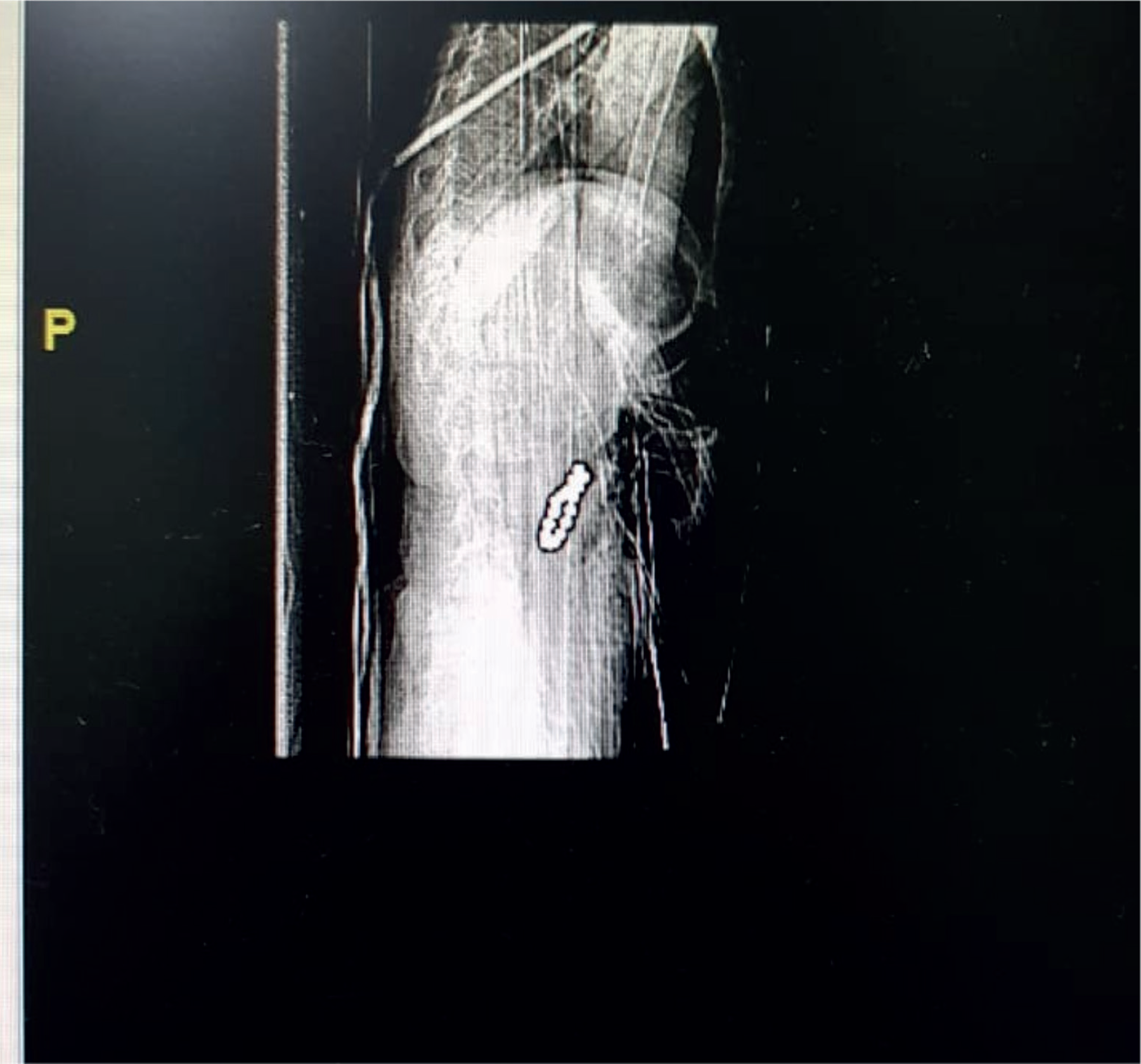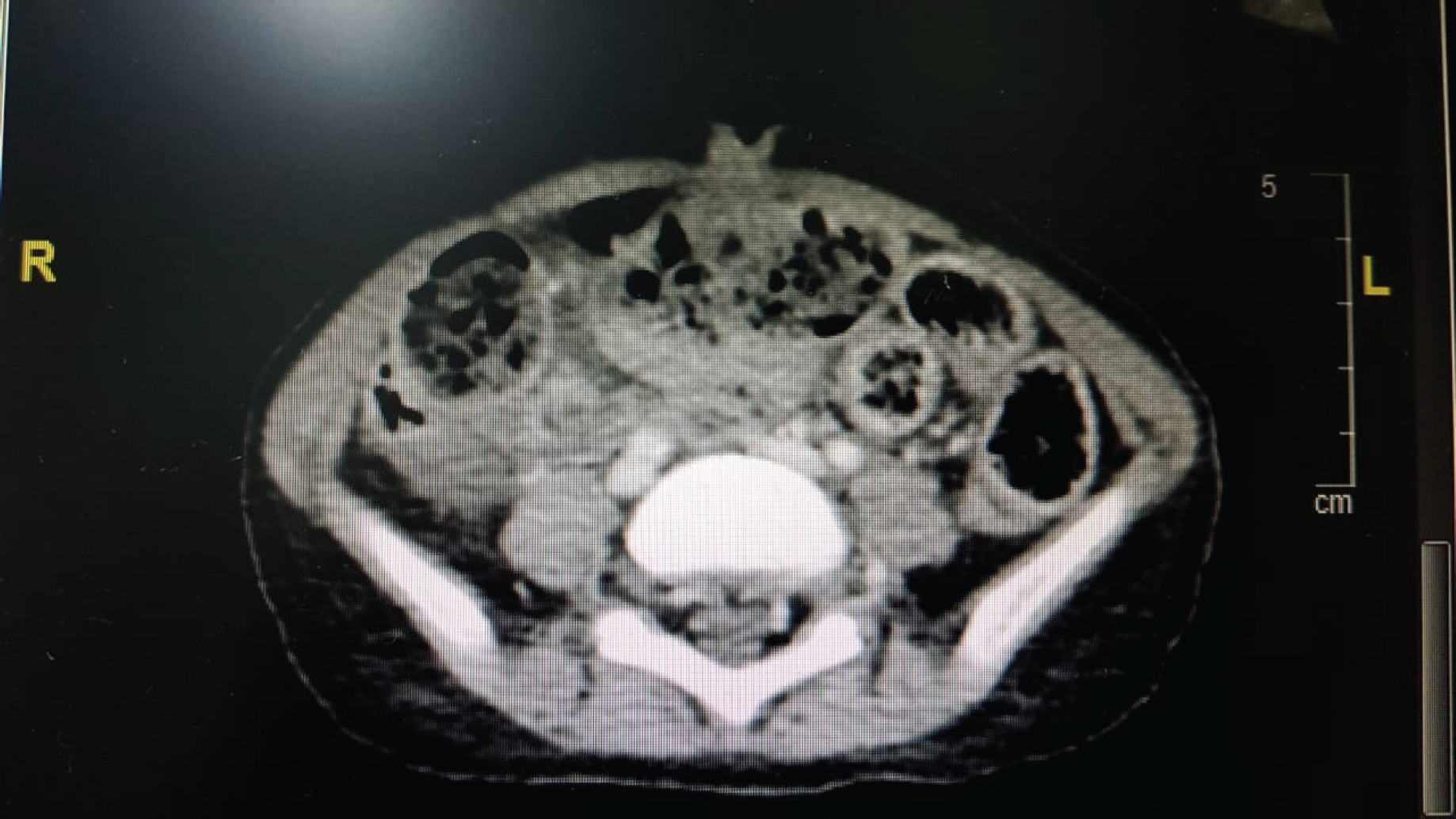Background
Foreign body ingestion is more common in children below 3 years but can be seen in older children and adults [1]. The majority of the ingested foreign bodies pass through the gut, and only less than 1% require surgical intervention for removal [2]. The ingestion of a single magnetic toy can be potentially dangerous, and the ingestion of multiple magnets can be even worse [3]. The powerful attractive forces of magnets can pull the loops of the intestine together, causing intestinal obstruction. It can interrupt the blood supply of the trapped section causing gangrene, necrosis, and fistula formation [4].
Case Presentation
A 4-year-old girl, previously healthy and developmentally normal, presented to the emergency department of the hospital with a 10 days’ history of vomiting and abdominal pain. There were no associated symptoms, and the child was otherwise well between the episodes of colicky abdominal pain. She was having constipation for the past 3 days. Her parents did not report any unusual history in the past. Her parents took her to different hospitals, where she was treated as a case of acute gastroenteritis and gastritis. She was prescribed symptomatic treatment for pain and vomiting along with oral rehydration therapy.
The pain and vomiting did not settle, and she continued to have off and on vomiting and abdominal pain.
On examination, the child was playful with normal vitals. The abdomen was soft, non-tender, having no visceromegaly. No abdominal mass was palpable. The rest of the systemic examination was normal.
Investigations performed outside included an ultrasound report which was normal, and routine chemistry, complete blood count, and urine analysis were also normal. An abdominal X-ray was done in the emergency room, which showed a collection of approximately 18 rounded radiopaque objects in the right lower abdomen with distension of bowel loops (Figure 1) After observing the X-ray, physician enquired about the history of foreign body ingestion in the child, to which they replied that they bought some magnetic balls for a school project of their elder son before 2 weeks. However, they could not recall any history of foreign object ingestion in the child. Further inquiry led to the discovery that the child had a history of Pica.
The child was shifted to a surgical unit, and a laparotomy was performed. The pre-operative computed tomography (CT) scan confirmed the diagnosis (Figure 2). Magnetic balls were removed after a laparotomy followed by an uneventful recovery, and the child was discharged after 1 week.

Abdominal radiograph done at the time of admission showed rounded radiopaque magnetic balls forming a loop in the right lower abdomen. Air-filled dilated intestinal loops with a paucity of gas shadows in the lower abdomen.

Enhanced CT of the abdomen and pelvis with contrast. There are multiple metallic objects adjacent to each other in the small bowel located at the level of L3–L4, quality of study greatly degraded by artifacts. Visualized solid viscera and osseous structures are unremarkable. No free air in the abdomen.
Discussion
A foreign body is common in children below the age of 3 years but can occur in older children and adults [1]. The majority of the foreign bodies pass through the gastrointestinal tract with only 1% requiring surgical removal [2]. The foreign bodies that compress the trachea also pose a great danger and may compromise the airway. Batteries were considered to be the potential threat for intestinal perforation and necrosis, but recently the reports have suggested that magnetic toy ingestion should be considered as hazardous as alkali batteries [3–5]. A small single magnet passes through the gut easily, but multiple magnets produce a considerable amount of force, which pulls the intestines together compromising the blood supply leading to necrosis, gangrene, and perforation [6–8]. A history of foreign body ingestion should be enquired in children presenting with vomiting and abdominal pain persisting for more than a few days in an otherwise healthy child. The ultrasound should be the first modality in such cases. If the ultrasound is not conclusive, then an abdominal X-ray should always be done [9,10]. In this case, the child was taken to different hospitals, and ultrasound was inconclusive while an abdominal X-ray was missed during the evaluation. The X-ray done at the time of admission was suggestive of foreign body ingestion. CT scan can be avoided in the presence of typical history and X-ray findings. In this case, the history of foreign body ingestion was lacking, which emphasizes the fact that kids should not be left unobserved while playing with magnetic balls, and the history of PICA should always be brought into the notice of family physician for further management. MRI has little value in the presence of typical X-ray or CT scan evidence of metallic object ingestion.
Conclusion
This case study highlights the fact that leaving kids unobserved while playing, especially with a history of Pica, can have serious consequences.
Awareness should be created among parents about the dangers of the ingestion of magnetic balls. Persistent vomiting and abdominal pain should always raise concerns and should be evaluated by ultrasound as the first modality. If it is inconclusive, then an abdominal X-ray or CT scan should be done.
What is new?
Battery ingestion has been known to be notorious in causing intestinal obstruction in the past. Nowadays, magnetic toys have gained popularity among kids, and cases have been reported in the literature, where magnetic toy ingestion has caused serious intestinal consequences requiring surgical intervention. We report a similar case that was misdiagnosed as acute gastroenteritis and gastritis, and it took 2 weeks to establish a final diagnosis. Parents were unaware of the ingestion.

